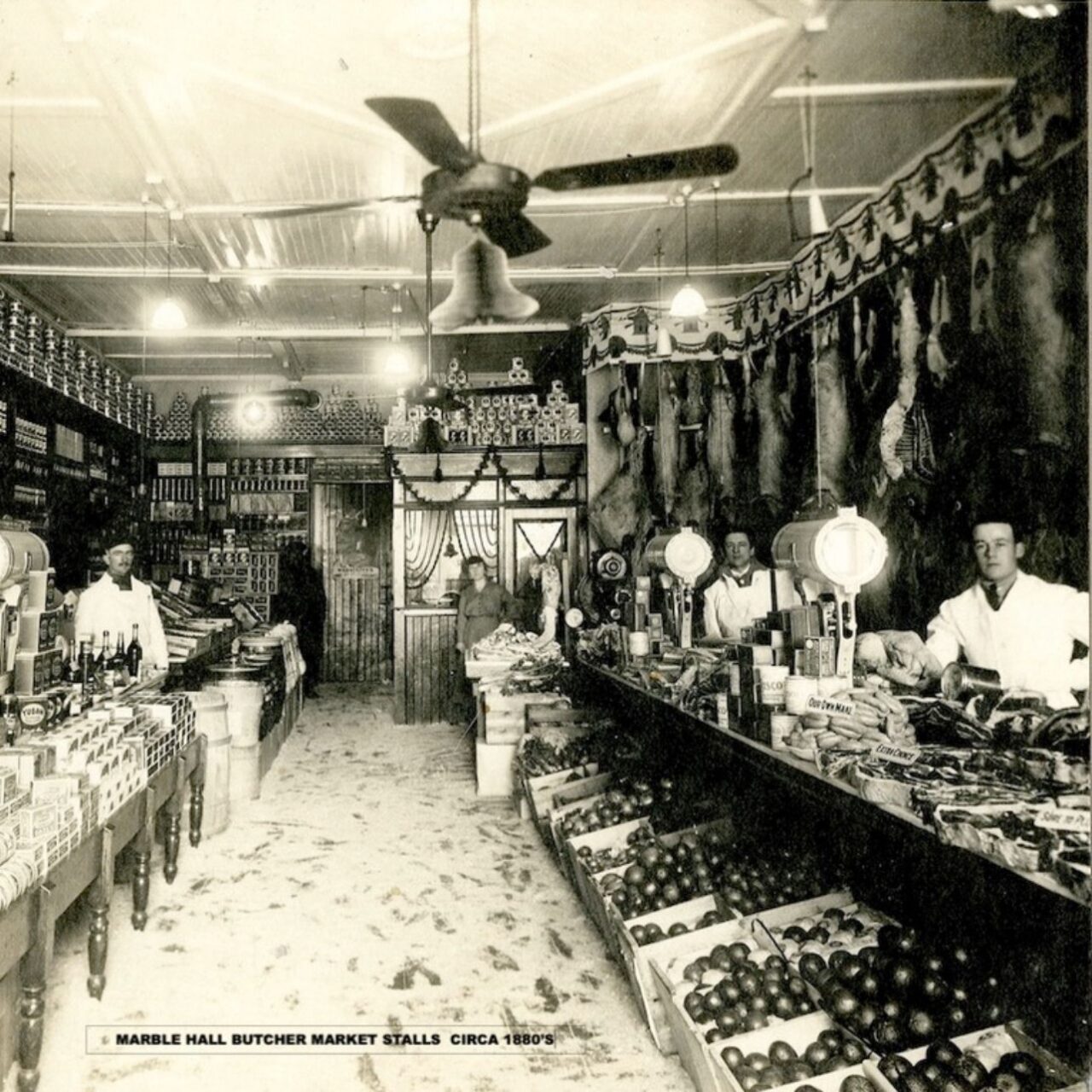
Marble Hall Stands Tall on Front Street
Author: Connie Carson
Connie is a well-known local story-teller and professional who has a passion for the history of the City of Belleville, in particular, the downtown streets.
Take a stroll with me along the Waterfront Trail to Belleville’s landmark double bowstring Upper Bridge. Stop for a moment to admire the view, and imagine the history contained in the walls of 395 Front Street, the iconic building we are about to enter.
In 1857 Mr. Thomas J. Higgins, a Marble Dealer, built the three-story marble front stone structure directly opposite one of the two famous 1930s bridges that spans the Moira River. The new building is described as follows:
“The coins, window caps and sills throughout are of blue marble variegated with white, the second and third stories are of white. The blue marble is from Madoc, the white from the Troy Quarry in Hungerford.”
George Neilson was the Architect, John Carscallen was the Joiner and Finisher, and John Callaghan was the Mason. This unique building is 24 feet wide by 64 feet deep, with approximately 4,600 square feet of space. The lower level was designed for a storefront, the second floor for a concert hall and the third for a meeting hall, all heated with gas.
The entire cost of the building was $2,600.
An ad appeared in the local newspaper in July of 1857 which read:
“To Let—the large, first-class Merchant Shop, marble front, cellar & attached, opposite the Upper Bridge, so as to command almost the entire grain trade of the town, is now being finished in the latest style, and will be ready for use by the first day of September next. Rent moderate. Apply to owner, Thos. J, Higgins, Belleville.”
In the Belleville Intelligencer dated August 28,1857, there was mention of Thomas Higgins calling a notice of meeting for the purpose of leasing toll gates at 395 Front Street and the Upper Bridge—to himself—for the years 1857 through 1899. There is no record as to whether any citizens of Belleville actually paid a toll to get across the Moira River.
In 1860, Mr. Higgins sold all his real estate holdings to Ezra William Holton and moved his family to California where he was employed as a Real Estate Broker. He passed away in San Diego in 1907. The Marble Hall has continued to stand tall for another 160 years in Downtown Belleville.
In 1862, The Furniture Warehouse & Manufactory, T & D Cherry proprietors, had a sales room there.
From 1861 to 1864, one floor of the building was home to the Christ Church congregation while they built a new church.
In 1867, most of Belleville’s 2,200 citizens could be found at the Marble Hall nearly every day of the week. Penny Readings were a popular form of public entertainment, consisting of book readings, musical performances and contests for the admission fee of just one penny.
It was also used for the Working Man’s Temperance Hall meetings, town meetings and public debates.
There is a long history of butchers occupying the premises starting with Edmund Snell who owned and operated the first butcher shop in Belleville from 1870 to 1899. When Edmund’s daughter married William Clark of Clark and Miles Butcher’s ancestry, they operated it along with James Clark until 1909.
Holley Shoemaker and the Quinte Cigar Factory, which was well-known for its “Old Homestead” brand of cigars, were tenant/owners at this address as well as C.R. Tilbrook the shoemaker, John McGowan Farm Implements, Sharpes’s Garage and Auto Wreckers, A.E Sharpe Watchmaker, E.P Hughes Service Station and Imperial Oil.
From the 1930s through the 1960s it was owned by Edwin Kellaway, and in the 1970s Bill and Betty Rowland established Templer Flowers in this location.
Today the 160-year-old Marble Hall is the proud home of Thomas Estevez Design where the owners Erin and Jesus Estevez welcome you at the impressive wooden front door, dazzle your senses with their creative custom artwork and one-of-a-kind jewellery pieces. They make you feel at home instantly. It’s a fabulous store and well worth a first or a 21st visit.







